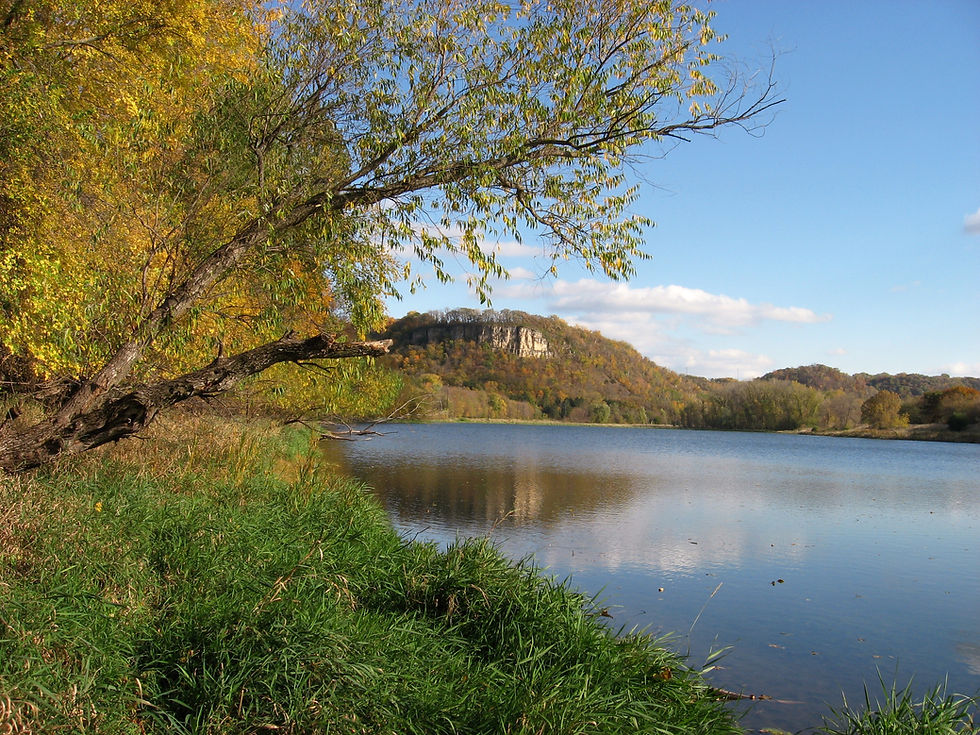Weather Whiplash
- wacoutanaturenotes
- Mar 7
- 3 min read
This has been a winter of extremes. Record high temperatures soon followed by negative lows. On top of that, only two very scant snowfalls creating conditions which permitted few opportunities for x-c skiing.
With that said, I did manage to take ski tours in the mornings of February 20 thru 23 on Wacouta Bay and Pond. Each outing presented interesting observations I will share with you in this post.

Early in the mornings of February 22 and 23, I heard the spring call of a resident male cardinal. High up near the top of our tall cottonwood tree, I detected the rich whistle "what -cheer,cheer, cheer."
Both sexes will sing these territorial songs which last longer as the nesting season draws closer. As these songs lengthen in duration, it is fairly common to have the male respond to it's reflections in a nearby window as it attempts to drive-away a bird he thinks is competition.

As I was skiing across Wacouta Bay, I came upon an adult muskrat travelling on top of the snow. This was unusual in a couple ways. First, as our backwaters have filled with unwanted sediments, the muskrat's main food source of arrowhead tubers and cattails have all but disappeared.
Second, muskrats like beaver survive the winter months by living off a food source they stashed before ice cover formed over the bay. Observing a muskrat traveling on the ice is an indication they have exhausted their food supply.
At this point, they become easy prey for hawks, eagles and coyotes.

It is quite easy to identify muskrat tracks in the snow or mud. Their vertically flattened, rudder-like tail often leaves a drag mark between their track prints.

As I continued skiing to the upper end of the bay, I began to notice occasional otter tracks and slides in the snow. These telltale signs were heading to and from the open water of the nearby river.
No doubt they were catching their fill of fish and various aquatic invertebrates in the shallow water.

As I approached a narrow channel in the upper northwest corner of the bay, I was surprised to observe many slides in a very small area. Why was there so much activity right here? I was soon to find out.

I soon discovered because of the water levels (presently 2.4 feet) the resident beavers were forced to abandon their lodge.
The available lodge was taken over by a family of otters. No wonder there were so many slides nearby.

With the upcoming weather warming up and ice break up, more and more eagles will be observed at the edge of the ice flows waiting for dead fish to float by. Fish sensitive to cold water like gizzard shad will die during cold snaps and float up under the ice. With the ice melting those fish float at the surface and are easy for eagles to catch.
Some folks refer to this phenomenon as a fish buffet. As ice break up peaks, Frontenac State Park visitors will report observing up to 100 eagles on ice flows off of Sand Point Trail.

If you look closely at the carp I found on my ski outing, you will notice it's eye is missing. Eagles and other scavenging birds frequently start by eating the eyes first.
Soft tissue is considered a delicacy in the carrion world. This phenomenon is similar to vultures going after the internal organs first when feeding on carcasses.

Another observation I made on my ski trip along the river were the numerous coyote tracks at the edge of the ice. They frequently travel these routes in search of any food that might have been left by other wildlife.
This is a good example of how vulnerable a lonely wandering muskrat on top of the ice could become. Just a short time after I observed the hungry muskrat, I observed an adult and two young coyotes break out of the willows along the river and run across the bay heading for the bluffs.

In the early morning of February 22nd while skiing on Wacouta Pond, I came across a fresh set of coyote tracks containing a considerable amount of blood. Given the fact late February is the peak of their mating season, it is conceivable there had been a serious fight over territory.
It is interesting that two days earlier I heard a family of coyotes carrying on some serious howling during the middle of the day.




Bruce,
Thank you for allowing others to see the beauty of this area through your eyes. Your wisdom and insight are great sources of education and inspiration.
Thanks Bruce. Always enjoy following your stories. Appreciate it!
Thanks, Bruce. Great photos and story